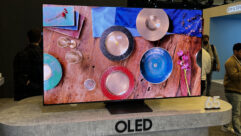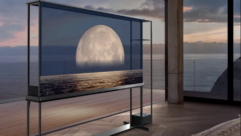
Those awaiting the commercial launch of blue PHOLED displays will have to wait a bit longer for the more efficient technology to hit the market. Last year we reported that Universal Display was still on track to deliver their panels by the end of 2024, but that seems to no longer be the case.
Universal Display has previously touted their upcoming technology as being 24-25% less power hungry, leading to lower energy costs and higher display brightness. This still seems to be the case, but the timeline for launch has been adjusted, with Universal Display saying during its Q2 financial report:
“The bottom-line is phosphorescent blue is coming. We just need some more time before commercial introduction. When it is adopted in an OLED device, we believe that the benefits will be significant for the industry, for consumers and for us,” before clarifying, “additional time needed will be measured in months and not years.”

The following was originally published August 28, 2023:
With LG and Samsung both interested in blue PHOLED technology for upcoming display releases, developer and supplier Universal Display recently discussed some additional properties of the emerging type of OLED. As a recap, standard OLED displays use phosphorescence for red and green diodes, but the color blue is created via fluorescence. Blue PHOLED simply means that all three colors are created using phosphorescence.
In a recent interview with Korean newspaper The Elec, Universal Display offered some additional clarity on their upcoming PHOLED timeline, as well as some beneficial properties of the technology. Blue PHOLED’s boosted energy efficiency means that displays can be run while saving additional power, or converting that savings into additional brightness.
See also: LG Display expanding OLED panel line, creating more sizes for transparent OLED
Vice President of Universal Display Mike Hack says, “The application of the first-generation blue phosphor can reduce the power consumption of the entire OLED display by 24-25%. The proportion of blue phosphor in the panel material cost is very small, so it would be cost-effective. The ability to reduce power consumption by 25% means we can increase battery life, brighten the display, and make OLED more competitive than other display technologies.”
Universal Display confirmed that they still plan to have blue PHOLED panels available for commercial use next year.
 This development comes nine years after researchers at the University of Michigan declared they had “extended the lifetime of blue PHOLEDs by a factor of 10, bringing them much closer to commercial use.” (This illustraion of the evolutionary chain in the physical model of the blue PHOLED was used at the time to represent its ability to live an extended period of time. Images courtesy of Joseph Xu/University of Michigan).
This development comes nine years after researchers at the University of Michigan declared they had “extended the lifetime of blue PHOLEDs by a factor of 10, bringing them much closer to commercial use.” (This illustraion of the evolutionary chain in the physical model of the blue PHOLED was used at the time to represent its ability to live an extended period of time. Images courtesy of Joseph Xu/University of Michigan).
The following was originally posted April 24, 2023:
According to OLED supplier Universal Display, LG and Samsung are both eyeing blue PHOLED technology for their next-gen OLED displays. As reported by flatpanelshd, Universal Display Vice President Mike Hack spoke to Korean newspaper ETNews. “We plan to mass-produce [blue PHOLED] from 2024,” said Hack, “Changing the blue OLED from fluorescence to phosphorescence can increase the luminous efficiency by 4 times.”
See also: LG’s transparent OLED is concept no more, featured heavily in new Korean airport display
While current OLED panels already utilize phosphorescence for red and green light, blue is still produced via florescence. Changing blue to also utilize phosphorescence would reportedly increase not only the luminousity of the display, but also the efficiency. While no concrete release leveraging the new technology is currently reported, Mike Hack hinted that the two tech giants could release blue PHOLED displays in the near future, stating, “The specific application schedule is to be determined by Samsung Display and LG Display. We plan to provide it to our customers at a reasonable price.”










